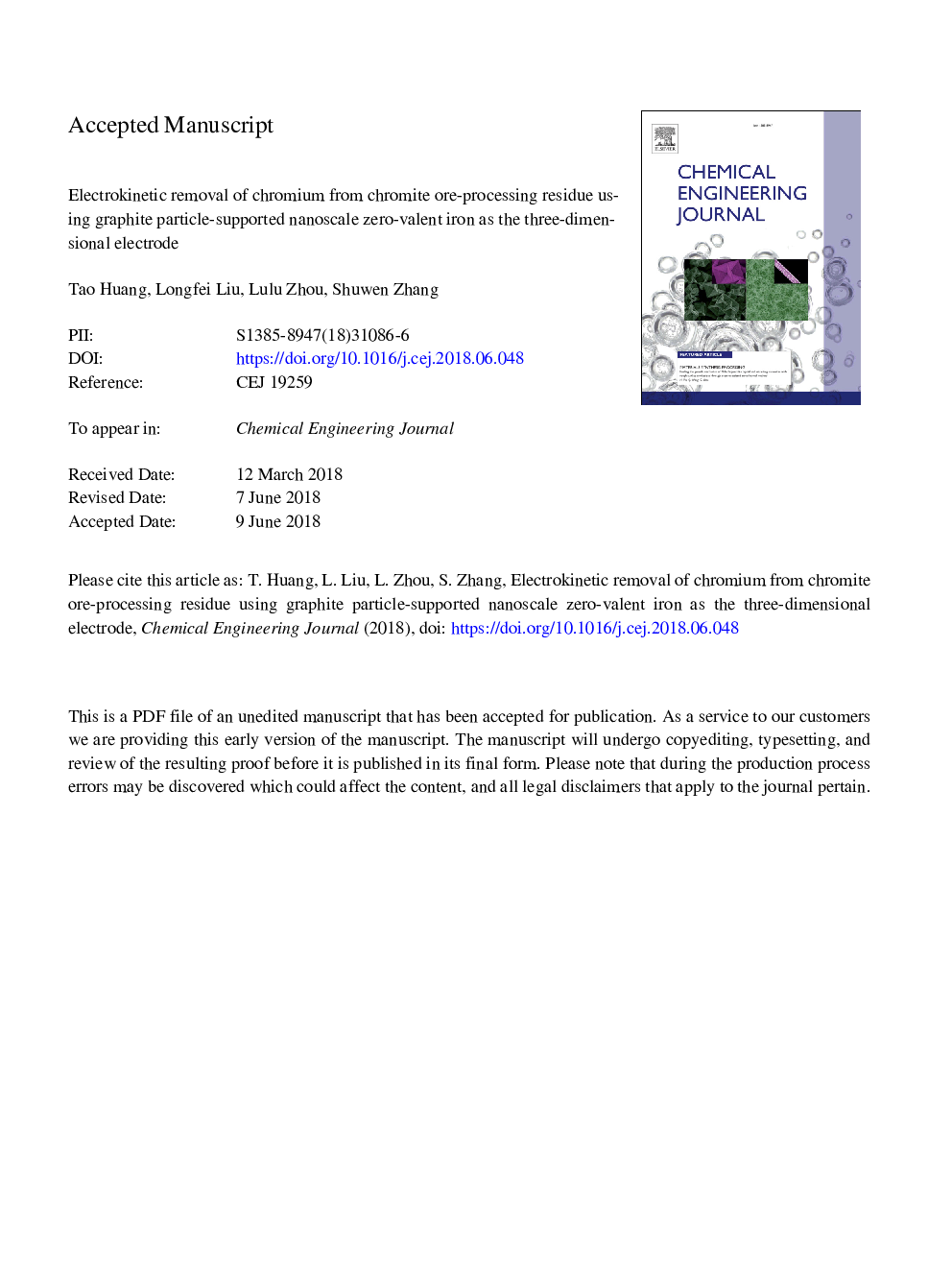| Article ID | Journal | Published Year | Pages | File Type |
|---|---|---|---|---|
| 6578381 | Chemical Engineering Journal | 2018 | 41 Pages |
Abstract
Chromite ore processing residue (COPR) contaminates farmland and groundwater around storage fields through the release of chromium leachate. Graphite particle-supported nanoscale zero-valent iron (GP-nZVI) synthesized by an impregnation-reduction pathway was used as a microelectrode in a three-dimensional electrochemical system to enhance the electrokinetic removal of Cr from COPR samples. The environmental activities of the electrokinetics-treated samples were measured by analysing the chemical speciation and conducting toxicological tests on Vibrio fischeri. The first-order and Elovich kinetic models are suitable for predicting the reaction process under different aqueous conditions. A strong acid environment and a high proportion of GP-nZVI in the electrolyser were conducive to achieving high removal efficiencies of Cr during the electrokinetic process. The improved reduction of Cr(VI) anions, the strengthened electromigration of Cr(III) cations, and the co-precipitation of Cr(III) and Fe(III) near the cathode were concluded to be the main advantages of a 3D electrode compared with a 2D system in increasing Cr electrokinetic removal from COPR. The detoxification of the COPR sample was found to be gradually reduced from the anode to cathode in the electrolyser. Electrokinetic treatment with GP-nZVI as the three-dimensional electrode can effectively decrease the toxicological effect of chromite ore-processing residue at an experimental scale.
Related Topics
Physical Sciences and Engineering
Chemical Engineering
Chemical Engineering (General)
Authors
Tao Huang, Longfei Liu, Lulu Zhou, Shuwen Zhang,
